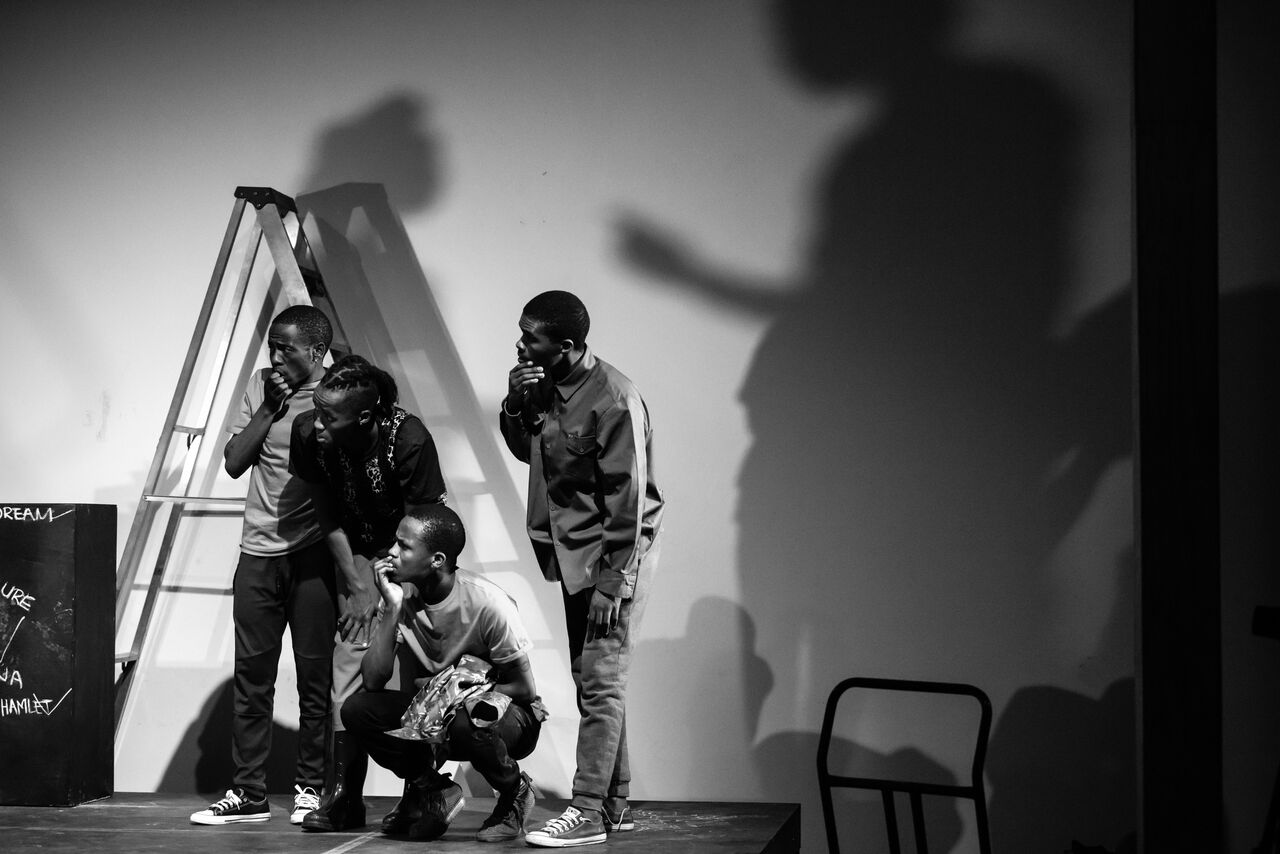Photo credit: Zivanai Matangi
Our last task for the week was to divide into gender groups (inspired by the theme of representation of women in the texts) and create the final improvised offers toward performance. From this, two songs and a sketch emerged. Though panic was high, working through the weekend was not an option. Because, as independent theatre makers, we don’t often have the privilege of making 9-5, it’s quite a thing to realise the exhaustion of creative output when you actually do. Rest after a 40-hour creative work week was required. Monday would roll around soon anyway.
During the weekend, we received the photoshoot images from Zivanai Matangi. There was something about the sense of play in the images that was incredibly attractive. The cast’s instinctual use of the space and their on-the-day wardrobe read beautifully in the images. A happy accident, really: the photoshoot inspired hard and fast decisions around the visual treatment of the ‘product’ and renewed a sense of trust in the process.
At the top of week 3, we sat down to reflect. What had emerged from the experimentations, presentations and improvisations – in part or in full – that we could actually use in front of an audience? The process of dramaturgy began on post-it notes: creating scenes and putting them in order, then re-ordering, shaping and cutting. We used moments we had loved. We polished what worked, we settled on marking and created a set from items that were useful for the selected pieces. We cut and re-integrated pieces. We literally stumbled on an ending. Our blackboard became an essential item for completing the space (though its contents were never used in the final piece) and spoke to the theme of Shakespeare’s enduring presence in the high school syllabus. Though super-pressurised and though the piece was still incomplete, it was incredibly helpful during this week to invite practitioners into the room for notes. We continued to refine as we saw what we were making for the first time with the inclusion of an audience lens.
As a facilitator (which is actually a preferable term when it comes to making in such a collective way), the game really started to become clear to me. The strongest theme of language and understanding – which is important when addressing Shakespeare as well as our lived experience as South Africans – stayed present throughout as a conversation with the audience: it was the key to invite the audience into the game that the cast were playing. Instead of reading a difficulty in understanding the language being spoken – be it Shakespearean English, Sepedi or isiZulu – as isolating, there is a shared experience in giving over to listening to the beauty of the spoken word and finding the meaning in intention: delivery and action. The whole game throughout the ‘product’ of Umsebenzi Ka Bra Shakes was exactly this, and this gave us as a group an immense clarity and power. We polished delivery, refined intention and breathed into preparing for our one and only performance.
And then, it was over so quickly. We presented the work ‘For Once’ at the Centre for the Less Good Idea on 9 August. We got a standing ovation from a diverse and generous audience. There was no note session afterward. Just a debrief (a first for me on an opening night).






















































